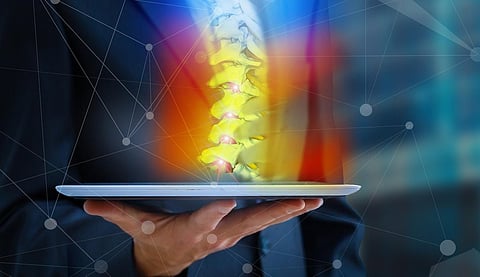TUESDAY, Sept. 24, 2024 (HealthDay News) -- For adults with symptomatic lumbar disc herniation, unilateral biportal endoscopic (UBE) microdiscectomy is associated with longer operating times and with lower pain medication consumption in the early postoperative period compared with tubular lumbar microdiscectomy, according to a study published online Sept. 19 in Blood.
Charla Fischer, M.D., from NYU Langone Health in New York City, and colleagues examined surgical outcomes and pain medication consumption for UBE versus tubular lumbar microdiscectomy in a retrospective cohort study of adults undergoing primary, single-level UBE or tubular lumbar microdiscectomy surgery at a high-volume institution. Data were included for 102 patients: 48 undergoing UBE and 54 tubular lumbar microdiscectomy.
The researchers found that the average operative time was higher for UBE than for tubular patients (133.1 versus 86.6 minutes), which trended downward over time but did not reach statistical significance. Complication or reoperation rates did not differ. From discharge to two-week follow-up, the average daily morphine milligram equivalents were lower in the UBE group (11.1 versus 14.1) but were similar thereafter. The UBE cohort had lower nonopioid medication prescription from discharge to two weeks (70.8 versus 92.6 percent) and two to six weeks (52.1 versus 85.2 percent), with no significant differences seen thereafter.
"This breakthrough technique is a game changer because it gives patients a better recovery with less pain and less need for narcotics and their related side-effects," Fischer said in a statement.
Abstract/Full Text (subscription or payment may be required)


